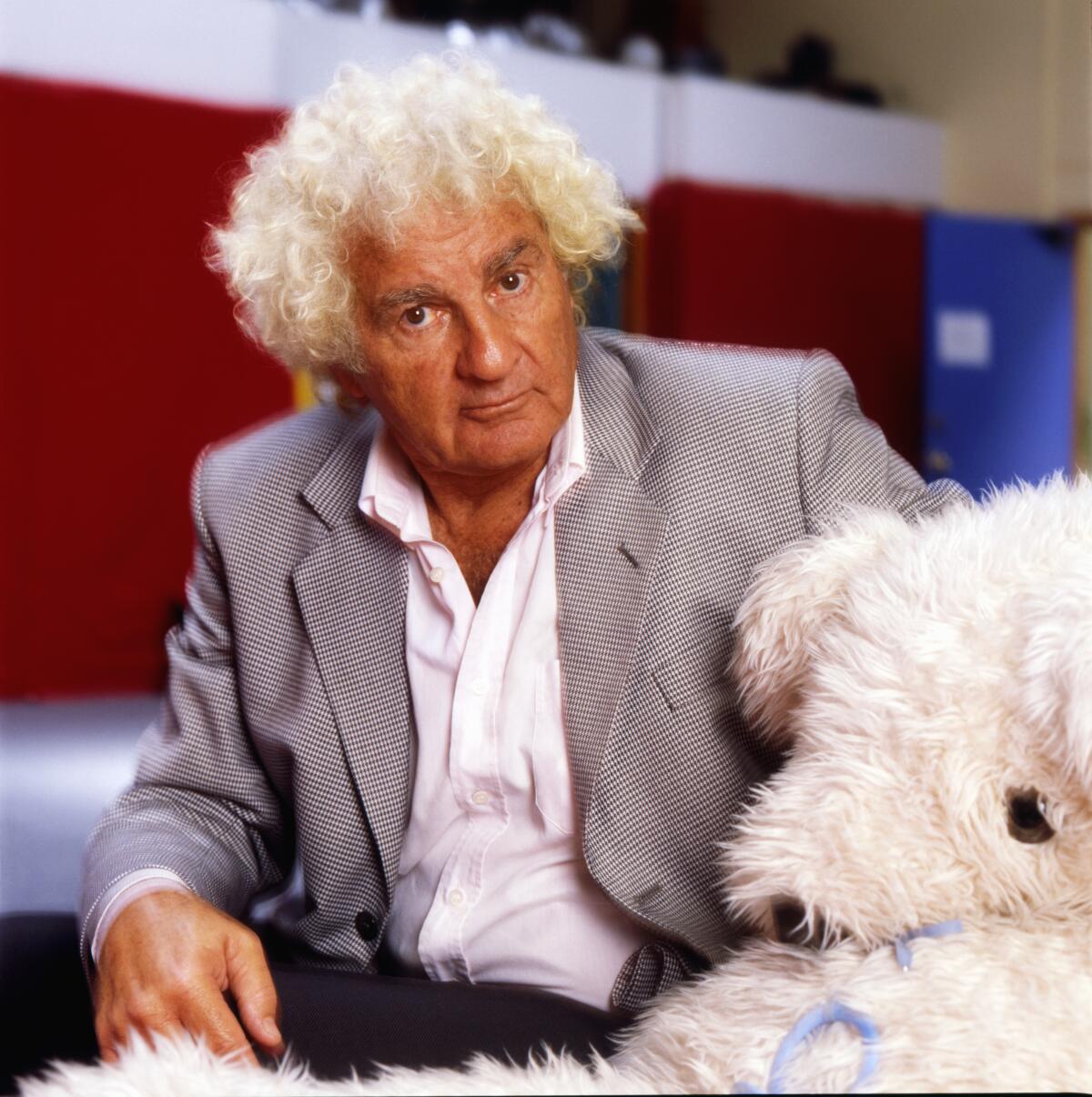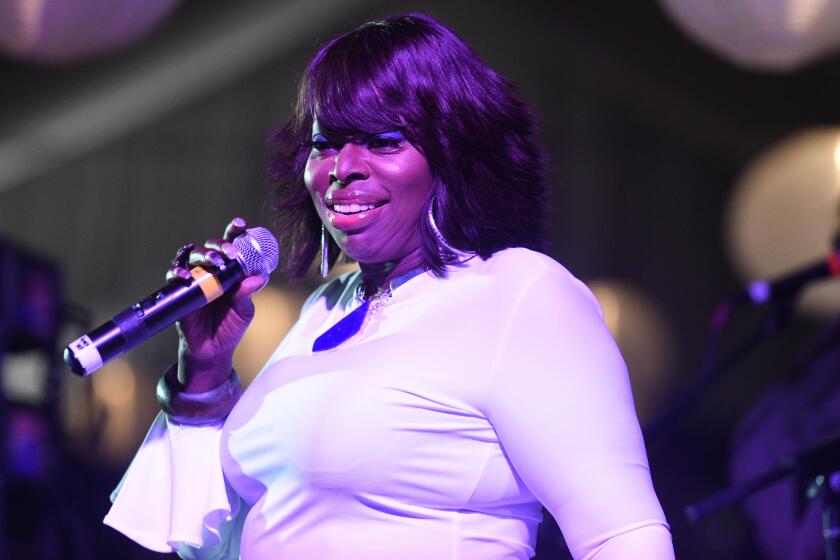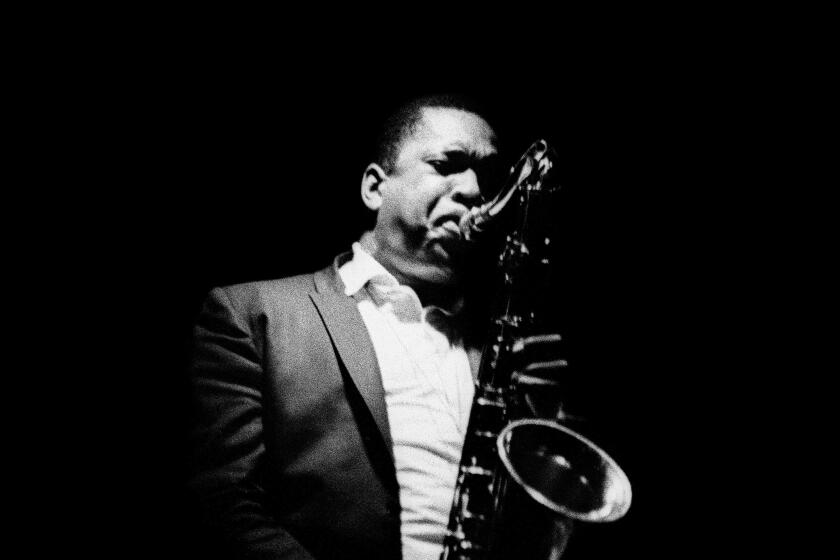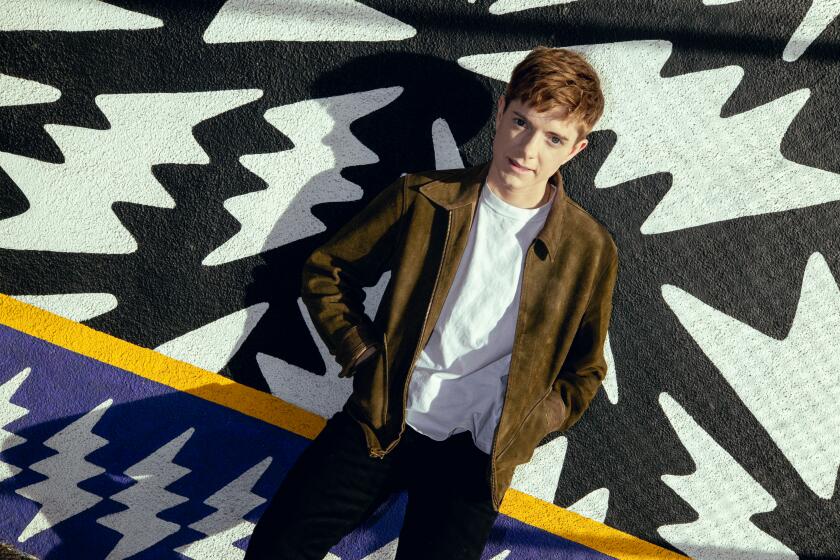How intense psychotherapy and a Bel-Air love nest led to John Lennon’s classic debut album
- Share via
In the months before John Lennon and Yoko Ono entered Abbey Road Studios in London to start work on what would become the album “John Lennon/Plastic Ono Band,” the couple were renting a home on Nimes Road in one of L.A.’s fanciest neighborhoods, Bel-Air.
The Beatles were still the most famous group in the world but were in the midst of breaking up, with members traveling to and from London to finish “Abbey Road,” work on various solo projects for their label Apple Records and argue about release schedules and royalties.
Living along a curvy lane behind walls that afforded complete privacy and overwhelming views of the city, Lennon and Ono were a world away from that drama. They woke to the sounds of chirping birds, sprinklers and lawnmowers, enjoyed their tea alone and, when so inclined, chilled by the pool. Lennon worked on some songs, including “Working Class Hero,” “Mother,” “Well, Well, Well” and “God.”
Then, each morning, Lennon would drive down Beverly Glen to psychologist Arthur Janov’s West Hollywood office, enter a darkened, soundproof room and scream as loudly and violently as he could.
“He used to finish a session feeling incredibly good,” Janov once recalled.

This backdrop set the tone for “John Lennon/Plastic Ono Band,” which came out in December 1970 and is the subject of an exhaustively documented box set just released by Capitol/UME and the Lennon estate. Called “John Lennon/Plastic Ono Band (The Ultimate Collection),” it comes with six CDs, two Blu-ray discs, a hardbound book, poster and postcards. It’s a revelatory set, especially for those with access to hi-fi gear and a darkened, soundproof room.
Newly mixed to increase Lennon’s vocal presence from fresh high-resolution transfers, the set features 87 recordings that have never been officially released, including rehearsal sessions, demo tapes recorded on Nimes Road and a series of alternative mixes drawn from unused tracks — congas on “Hold On” are a revelation, for example. An accompanying coffee table book, “John & Yoko/Plastic Ono Band,” offers an even deeper dive into the couple’s creative partnership.
“During 1970, we did extensive Primal Scream therapy for six months, which was very beneficial for us and many of the songs were inspired as a result of those sessions,” writes Ono in the preface to the coffee table book, adding that “John’s songs were a literate expression of his feelings.” (Ono declined an interview request for this article.)
The result, “John Lennon/Plastic Ono Band,” was Lennon’s debut solo album. It was issued the same day as Ono’s companion album, “Yoko Ono/Plastic Ono Band,” and found Lennon in an intimate setting with a few friends purging unfiltered emotions into songs about “freaks on the phone,” isolation, leaders who “tortured and scared you for 20-odd years” and his lack of belief in, among concepts, Jesus, magic, Adolf Hitler, the I Ching, the Buddha, yoga, kings and the Beatles.
“He had changed a hell of a lot because of this primal scream thing, and that was really heavy,” says Klaus Voormann, who played bass on the album, on the phone from Germany. “It was heavy for him, it was heavy for Yoko, and it was heavy for us.”
As with most things Beatle-related, the critics loved Lennon’s “Plastic Ono Band” when it came out. Creem’s Dave Marsh wrote that it was “interesting and even enlightening to see a man working out his trauma on black plastic but more than that, it’s totally enthralling to see that Lennon has once again unified, to some degree, his life and his music into a truly whole statement.”
The Times’ Robert Hilburn called it “nothing short of a masterpiece,” and “a work that is filled with pain and sorrow, searching and struggle. It is frightfully honest, profoundly moving.” That its emotion is tied to a bestselling psychology self-help book is often overlooked, but it played a central role in Hilburn’s review.

“Primal therapy has to do with the traumas you’ve undergone in the womb, at birth, in infancy and childhood,” Janov explained in an interview excerpted in the book. “We have needs that we are all born with, and when those basic needs are not met, we hurt. And when that hurt is big enough, it’s imprinted in the system. It changes our whole physiologic system and all those pains are held in storage, causing tension, anxiety and depression.”
After Lennon and Ono read Janov’s book, “The Primal Scream” (subtitled “Primal Therapy: The Cure for Neurosis”), Ono asked that Janov travel to them in London, which he did. “He was in bad shape. He couldn’t leave his room,” Janov said of Lennon. But Janov had work in L.A., so Lennon and Ono followed him back and rented a home in Bel-Air. Lennon wasn’t the only one enduring pain. He and Ono had been trying to have a baby, but she had suffered two miscarriages.
Forced to return to England six months later to deal with visa issues, Lennon and Ono were barely off the plane before they entered Abbey Road. The sparse, emotionally raw Lennon solo album is dense with echoes of his West Hollywood wails, and the sessions were the same, Voormann says.
Voormann, best known for creating the art for “Revolver,” had met Lennon and the rest of the Beatles long before Beatlemania took hold, when they were rocking the Star Club in Hamburg, Germany, in the early 1960s, and he remained within the band’s inner circle. At the end of the decade, Voormann had just concluded a run with Manfred Mann when Lennon called to ask whether he’d join him, Ono, Ringo Starr and producer Phil Spector at Abbey Road. Needless to say, it was a welcome invitation.
At Abbey Road, Voormann described walking into “a whole vibe. There was crying. There was laughing. There was happiness. There was hugging each other. And we were all part of this amazing atmosphere.”
Simon Hilton, the box set’s producer and production manager, said that contrary to reports that Lennon “was angry and throwing headphones and stuff and making a fuss” during the week at Abbey Road, “there’s no evidence of that at all.”
Listening to the rehearsal tapes, which find Lennon, Starr and Voormann working through classics including “Honey Don’t,” “Mystery Train,” “Glad All Over” and the Beatles’ “Get Back,” Hilton continues, “you can hear what an amazing time they were having.”
The three were “obviously working really hard but also really enjoying being in each other’s presence. They were such good mates and I’m sure after the tensions of sitting in the room with Paul and George and Ringo, this was a huge relief.” (Hilton stresses that “John never had any beef with Ringo, ever.”)
“There is a playfulness among the three main musicians that in no way represents how earnest the songs are,” says Rob Stevens, who worked as a mixing engineer on “The Ultimate Collection” and oversaw the raw studio mix recordings and outtakes. “The laser beam is turned on right when the take starts and it’s turned off at the end — and there’s some real silliness before and afterwards.”
All you need to do is listen to “Mother,” the wrenching opening song on the album, to appreciate the ways in which primal scream therapy informed the sessions.
Voormann remembers worrying about Lennon’s vocal cords as he sung the track’s climactic ending, which finds the singer pushing his limits. “I was thinking, ‘Oh my God, I hope he’s not going to lose his voice.’” Lennon, the bassist adds, was never trained as a singer, and cited as an example once requesting “Please Mr. Postman” during the Hamburg days. Lennon declined. “He said, ‘No, let’s do it as the last number because if I do that now, I’m going to be hoarse all night.’”
Lennon is on the cusp of hoarseness, Voormann says, in the final version of “Mother,” which is a song that addresses Lennon’s relationship with his mom, Julia, who as a young parent left Lennon to live with his Aunt Mimi and only sporadically reached out after that. (“I lost her twice,” Lennon recalled during an interview. “Once as a 5-year-old when I was moved in with my aunty, and once again when she actually physically died.”)
“His voice is already starting to break on the record,” Voormann says, “and it’s fantastic because he is really screaming as much and as long as he can. He wanted to get that out of his system. The wounds were opened up inside of him, and these wounds he put into those songs.”
If there was a flaw, for Ono it was in the final mix. Lennon’s voice wasn’t prominent enough. For this new remaster, Ono suggested the engineers make it more prominent. “That was Yoko’s directive right from the beginning,” says Paul Hicks, who mixed and engineered much of the new set. “‘Bring John’s voice out to the fore’ and ‘You’ll find all the emotion in John’s voice.’”
Adds Rob Stevens of Lennon and Ono’s Lenono Archives, “Bringing John’s voice up was a real revelation for just about anybody who had listened to anything else that he had done.” Referring to a microphone effect that adds a sharp echo, Stevens added that Lennon “covered his voice up with a ton of slap. There’s a ton of reverb.” Stevens says that in the process of working on the recordings, he was able to remove the reverb and hear the unfiltered Lennon. “What was there was the same emotion but more nuanced because there wasn’t a slap or two or three behind it.”
The producer and engineer John Leckie was 20 when he landed a coveted entry-level job running tape at Abbey Road Studios in London. He started in January 1970 and, not long after, was in the studio recording “All Things Must Pass” with George Harrison, and half a year later he was working on Lennon’s record.
Leckie, who has gone on to produce essential records by the Fall, Radiohead, XTC, Elastica, My Morning Jacket and dozens more, says that he recalls this early Lennon session as being a relaxed, comfortable environment. Spector was a quiet, unobtrusive presence — there was no “Wall of Sound” at Abbey Road — and Ono was more involved with the creative back and forth.
“Phil wasn’t there all the time, but my memory is that he was there a lot of time and when he was there, it was really good vibes. It’s funny, because when people ask me about this record, they always seem to think there was this angst — dreadful, painful. ‘What was it like to be in the room with John pouring out all this angst about his abuse over the years and the terrible terror he was going through?’”
Leckie continues, “It wasn’t like that at all, and you can tell by this box and the outtakes it was great fun. He was playing with his best friends. He was playing with Ringo and Klaus Voormann, and he’d known Klaus since Hamburg.”
Voormann underscores the sense of camaraderie at play, an experience jarred by hearing the rehearsal tapes anew. “All this came back to me. It felt so good having certainty knowing we were really a group — this little tiny group, just Ringo, me and John.”
Lennon’s solo debut, in hindsight, was an outlier. He started recording its follow-up, “Imagine,” less than a year later, and not long after that, he and Ono separated. Lennon moved back to L.A. and commenced a bender that many nights led him just a block from Janov’s office, getting drunk with Harry Nilsson at the Troubadour. Lennon and Ono reconciled a few years later. The five studio albums that followed “Plastic Ono Band,” while accomplished, seldom matched the feral energy and sharpened pen found on his debut.
Meanwhile, by 1974, Janov was in the pages of The Times being lumped in with Dear Abby, Billy Graham, radio talk show hosts and witches, as a guru who “professes to have an answer for sale.” A documentary called “Primal Process” followed a few years later. One reviewer praised the film but warned that “the continuous crying can be taxing.” In the 1980s, the English new wave group Tears for Fears took its name from Janov’s therapeutic method, and the similarly inspired “Shout” became one of its signature hits.
Janov, for the record, loved “John Lennon/Plastic Ono Band.” Speaking to Hilburn in 1970, the therapist and author, who died in 2017, described it as “a very dialectic album. It is the most personal statement imaginable, yet it has a universal language. It could only be written by someone who has arrived at a state of understanding himself. It isn’t something that any kid with a guitar could sit down and write.”
More to Read
The biggest entertainment stories
Get our big stories about Hollywood, film, television, music, arts, culture and more right in your inbox as soon as they publish.
You may occasionally receive promotional content from the Los Angeles Times.











